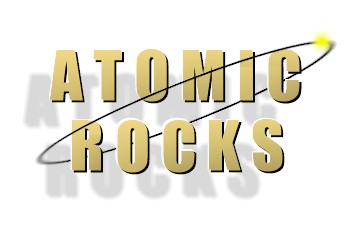

URANIUM MINERALS
Web site for sale see main page
|
Shown below is a partial list of
radioactive minerals which can be found in nature. Uraninite (combined UO2and UO3;
50-85 percent U308). Uraninite is a naturally
occurring uranium oxide with cubic or octahedral crystal form. It has a
specific gravity of 8-10.5 (iron = 7.85), a grayish-black color sometimes
with a greenish cast and a hardness of 5-6, about the same as steel. Its
streak3 is black. Its most widespread occurrence is in
pegmatites , in which it is found in small amounts, throughout the world.
However, it is also an important constituent of nearly all important
primary deposits, occurring closely associated with its massive variety,
pitchblende. A general term for a mixture of secondary uranium minerals like the ones listed below is Gummite. Carnotite (K20*2UO3*V2O5*nH20; 50-55 percent U3O8). Carnotite, a potassium uranium vanadate, is the most important of the secondary uranium ore minerals. It is a lemon-yellow mineral with an earthy luster, a yellow streak, and a specific gravity of about 4. It occurs most commonly in soft; powdery aggregates of finely crystalline material or in thin films or stains on rocks or other minerals. Tyuyamunite (CaO*2UO3 *V2O5*nH20;
48-55 percent U3O8).Tyuyamunite is closely related
to carnotite as indicated by the chemical formula, which is the same
except that calcium substitutes for the potassium of carnotite. The
physical properties of tyuyamunite are the same except for a slightly more
greenish color than carnotite and, in some cases, a very weak yellow-green
fluorescence not found in carnotite. Uranophane (CaO*2UO3*2SiO2*6H2O;
65 percent U308 Uranophane is a hydrated calcium
uranium silicate containing silica in place of the phosphate of autunite.
It is slightly lighter in color and somewhat heavier than autunite
(specific gravity 3.85) and has a different crystalline form; it may occur
as stains or coatings without apparent crystal form or as finely flbrous
or radiating crystal aggregates. Monazite, Euxenite, Allanite, Samarskite, Bastnasite Cerite, Polycrase, Betafite, Pyrochlore, and Thorite.
|
| MAIN | GALLERY | LINKS | CREDITS |